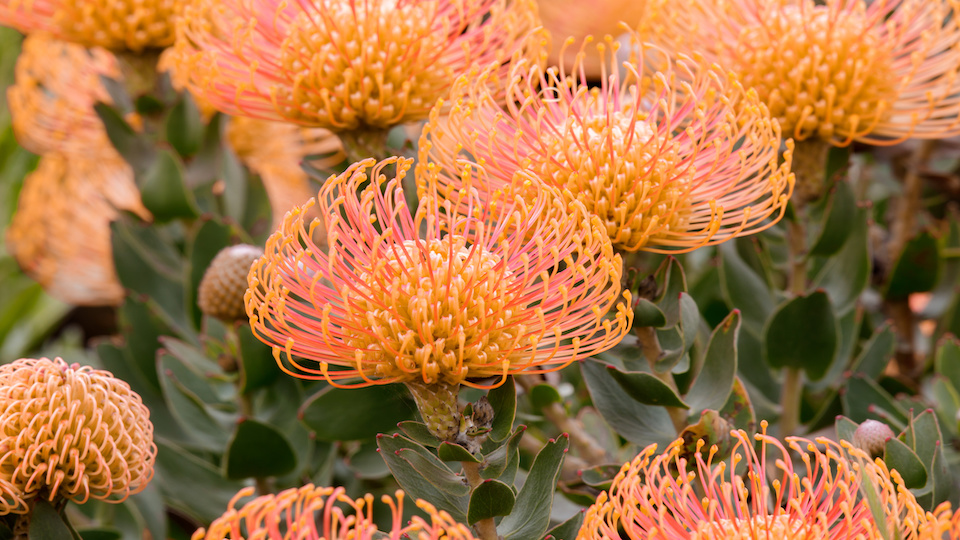Xeriscaping is all about designing the garden to minimize water usage. Drought tolerant plants are the obvious choices, but that doesn’t mean you should fill the yard with just cacti and succulents. Many flowering shrubs, grasses, and plants that have underground rhizomes or bulbs can manage with occasional watering. Some plants may need to be watered when they’re young but can go without water for extended periods once they’re established. Others can completely manage with seasonal precipitation, requiring no additional supplement because they go dormant during the dry season.
Here are some tips to make your xeriscape garden a huge success
Pay attention to water needs
Since the water requirement of different plants varies, plant them in different watering zones for saving water and for convenience. Reserve easily accessible areas for flowering and foliage plants that may need more frequent watering than others. Your weekly or fortnightly watering will only cover this area. The most drought tolerant ones that need not be watered at all can be relegated to the back and distant areas of the garden. The mid-region can accommodate plants that require water only occasionally, like once a month or when they seem to suffer from drought.
Prepare the soil
When you grow cacti and succulents in containers, water drainage is usually the main concern, but the same plants in the garden may appreciate a more water retentive growing medium. A lot of water gets lost into the surrounding air and soil, so it makes sense to amend the soil with plenty of compost. The advantage of compost is that it is beneficial for both clayey and sandy soils.
Water loss through surface evaporation is highest in fine clayey soil because of the capillary action that pushes water upwards. At the same time, soil compaction prevents percolation of water into the deeper layers. Since compost particles are larger than clay particles, they create more air spaces in the soil, thus reducing upward capillary movement of water and facilitating deeper percolation.
The spongy texture of compost allows it to absorb water and retain it for long in sandy soils that would otherwise drain too fast. To amend the soil with compost, spread 2-3 inches thick on the ground and turn down 6-8 inches.
Start with smaller plants
Mature plants are less susceptible to water stress compared to young plants, but preparing a xeriscape with larger specimens is an oft-repeated mistake. Not only are they more expensive to source and difficult to handle, they often fail to get established properly. They suffer from severe transplant shock and take longer to recover. Since their roots usually get brutally mutilated during the process, they may need to use up all their stored food until they grow new roots. This makes them weak and susceptible to disease. They are likely to suffer wind damage as their new root system may not be strong enough to anchor the large bulk.
A true drought tolerant and sustainable xeriscape is not made overnight. Start with young plants, and allow them to get established in the landscape with a sufficient amount of water. If you have a large area, develop it part by part so that you can focus your attention and resources to a few plants at a time. Follow up with infrequent, yet deep watering, which helps these plants develop a strong root system that stretches deep and wide.
Group plantings
Many drought-tolerant plants are naturally compact in habit, which makes them ideal for creating minimalist gardens with individual plants scattered across the landscape. This might be appealing to some, but if you want a more verdant garden, group plantings can provide that.
Landscaping is all about creating an atmosphere or ‘feel;’ xeriscaping does just that but within a restrictive environment. So the question is whether you want a desert look with minimal planting or would rather create a lush, oasis-like feel in the midst of an otherwise dull landscape. Even natural desserts with vast expanses of sand are punctuated by clusters of plants.
You can group together plants with contrasting, yet, complementary shapes, sizes, and height. Take special care to match their water requirements also. Many cacti that can survive dry conditions for years on end are infamous for sucking up water with a vengeance when it is available. So don’t pair them up with plants that are less drought-tolerant.
Use native plants
Plants growing in the natural landscape of a given area are acclimatized to the amount of precipitation it receives, as well as the seasonal changes and other unique local conditions. Hardy alpine plants growing on exposed mountainsides and rock faces are ideal for areas with a cold and dry climate. Xeriscapes in coastal areas need plants that are not only drought-resistant but salt tolerant as well. So hardy Ice plants (Delosperma cooperi), false aloe (Hesperaloe parviflora), Hen and Chicks (Sempervivum tectorum), Cheddar Pinks (Dianthus gratianopolitanus) and Blanket flower (Gaillardia pulchella) do well there. For more choices for a successful xeriscape in such areas, look to the native plants of the coastal plains ranging from New Jersey to Florida and along the Gulf Coast up to Texas.
Most plants have distinct periods of active growth and dormancy. More often than not, they are fine-tuned to the local climate. In areas with dry winters and summer showers, plants grow vigorously in summer and go dormant in winter. If winters are wet, but summers are hot and dry, the opposite is true.
-Susan Patterson



